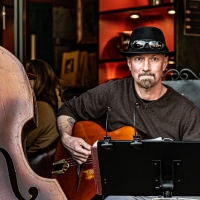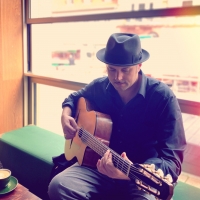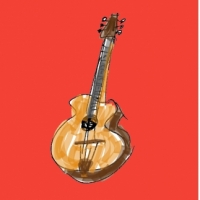DjangoBooks.com
Welcome to our Community!
Categories
- 20K All Categories
- 1.1K General
- 476 Welcome
- 59 Archtop Eddy's Corner
- 146 CD, DVD, and Concert Reviews
- 384 FAQ
- 26 Gypsy Jazz Italia
- 26 Photos
- 202 Gypsy Picking
- 21 Unaccompanied Django
- 15 Pearl Django Play-Along Vol.1
- 17 Gypsy Fire
- 45 Gypsy Rhythm
- 1.4K Gypsy Jazz University - Get Educated
- 130 Gypsy Jazz 101
- 224 Repertoire
- 218 History
- 707 Technique
- 51 Licks and Patterns
- 6 Daniel Givone Manouche Guitare Method Users Group
- 20 Eddie Lang Club
- 1.3K Gypsy Jazz Gear
- 801 Guitars, Strings, Picks, Amps, Pickups and Other Accessories
- 457 Classifieds
- 49 Recording
- 62 Other Instruments
- 18 Violin
- 5 Mandolin
- 22 Accordion
- 7 Bass
- 10 Woodwinds
- 347 Gypsy Jazz Events
- 143 North America
- 109 Europe
- 95 International
In this Discussion
Who's Online (0)
April Song Of The Month--Anniversary Song
This month's song is often called in my neck of the woods, but with a twist or two, requiring a brief discussion before it's counted off: It's usually played in the somewhat unusual form of AABB and occasionally called as a waltz. It seems that the original composing credit goes back to Iosif Ivanovich (when it was called Waves Of The Danube), but as Anniversary Song, the credit goes to Al Jolson (lyrics) & Saul Chaplin (music), in 1946. Either way, it's an easy chart (I'll post the one my band uses later) and a lot of fun to solo over. I tend to call it at an up tempo, but not so fast that it loses its groove.
My favorite version of it from Django is from 1947, with him on the sweet archtop and the head played on clarinet. In my view, his tone is to die for--














Comments
That is also my favorite version. Great tone and an interesting solo. I sliced it a while ago: https://www.soundslice.com/slices/zjCcc/
(beware tab readers- it's in my fourths tuning, so you'll have to adjust, or just read the dots)
Nice, Wim. That's interesting that you tuned in fourths. What's the advantage of doing that?
I've probably shared this before - it's my grandfather and great-uncle (pictured L to R below) playing the waltz version "The Danube Waves" on a diatonic accordion (the same one pictured on the Soundcloud file) and a 4 string banjo.
https://soundcloud.com/andrew-ulle/flots-du-danube?utm_source=clipboard&utm_medium=text&utm_campaign=social_sharing
We play this in 4/4 as I expect most do. I always understood that it was "Les Flots du Danube" as a waltz, and Jolson/Chaplin took it to 4/4, gave it lyrics and renamed it "Anniversary Song." Yet, here's a clip from the Al Jolson story with the lyrics and labeled Anniversary Song but it is still in 3/4.
I always liked the tone that Stochelo got during the Djangologists sessions. I think this was a B-side the released as a free EP that was downloadable from their site. Here they call it "Flots du Danube" but it is in 4/4. So go figure on the naming conventions!
it's my grandfather and great-uncle playing the waltz version
Great photo and recording, Andrew.
Here's the chart my band uses, pretty straightforward--
@MikeK Pretty standard chart. We have a few subs we play that differ from yours. On the last 4 bars of the A and of the B sections, we'll play either F7/E7/A-6/A-6 or E7/F7E7/A-6/A-6. Pretty typical half step move there.
On bar 4 of the B section, we'll go to C#dim as a passing chord which walks the bass nicely up from the C to C# to the D-7. In bars 7-8 we play the relative minor (so A-6) instead of the C. Then, instead of E7 in bars 9-10 of the B section, we'll play Bb6. It has the D note from the melody and again the bass has that half step movement from the A to the Bb to the A. I might try the C there in bar 7-8 next time to get the C-Bb-A walk down. Could be cool.
Very nice, Billy. Great subs & chordal movement.
I'm really not a fan when the two lines in the B section repeat. It certainly isn't wrong but the melody moves so I feel the chordal harmony should two. So 251 to C then minor 251 to A- (looking at D- as Bø)
This one was always one of my favorite arrangements. Listening to it now I was reminded how awesome guitar player Reinier is. So light and bouncy, every single note is placed right in the pocket. And Jan on rhythm is a template to follow, I'll definitely spend some time playing along copying that rhythm. Very short hits on both 1-3 groups and 2-4. And I even enjoy the accordion playing, a lot. Simon on bass, what an incredible band.
But none get more epic than the version from Selmer 607 vol3 album. The playing is just mind blowing. Too bad there's no live video of them playing this one.